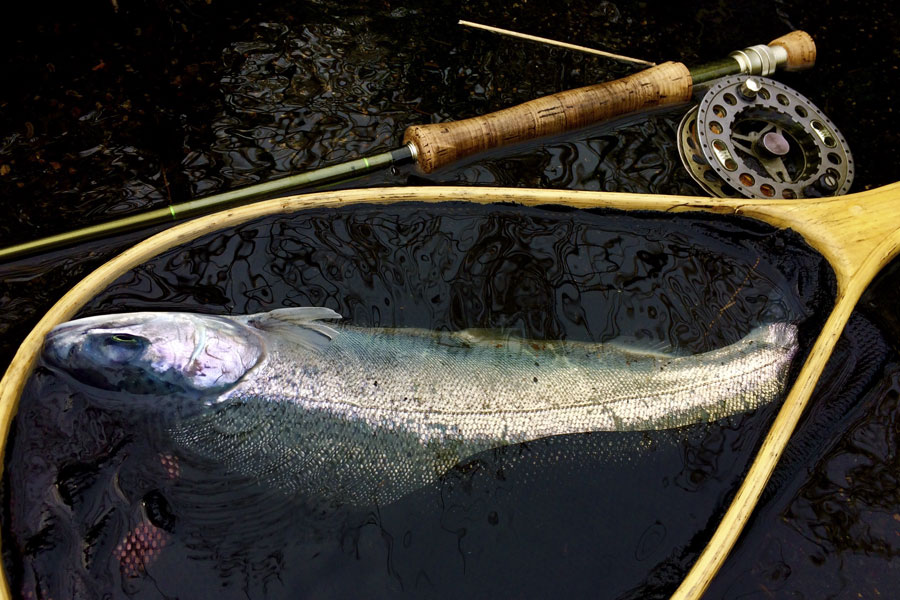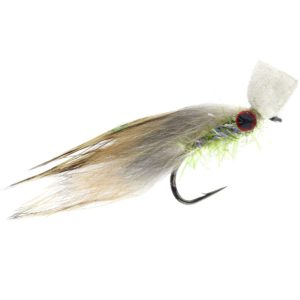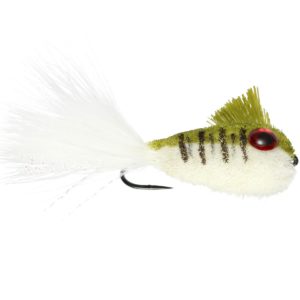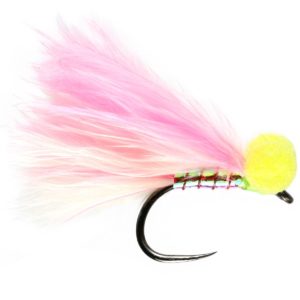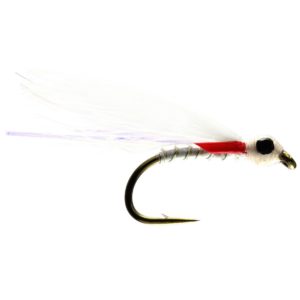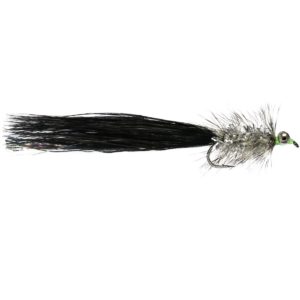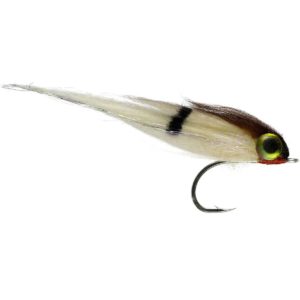Hatches of insects begin to slow down during October with only a few smaller buzzer hatches occurring as water temperatures begin to cool. These lower temperatures don’t deter the trout though as water temperatures usually sit between a steady 8-10 degrees, it creates the perfect habitat of activity.
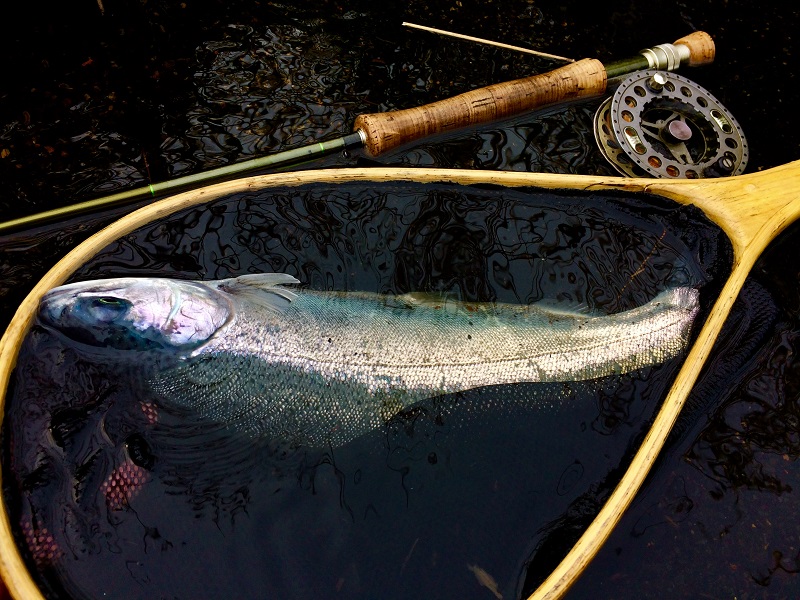
During this month, trout start to feed up heavily for the winter months ahead. In this article, we will be going through our go-to fly choices, how to fish them and how to locate fry feeders.
The best trout flies to use in October are pin fry imitations, such as snakes, humungous, booby and fry patterns. These flies cover imitative patterns to suggestive patterns.
Focusing on Fry Feeding Fish
Continuing on from September, trout will be primarily targeting baitfish/fry as it provides them with a rich protein-based diet. This rich diet allows fish to feed up and put on enough weight to see them through the winter months as their metabolism starts to slow down. The great thing about targeting October fry feeding trout is that it increases your chances of hooking into a specimen sized trout.
Location is Key!
With water temperatures cooling down, features such as margins and solid structure like rocks etc tend to warm up a lot quicker and provide a safe habitat, making these key areas the best place to initially target.
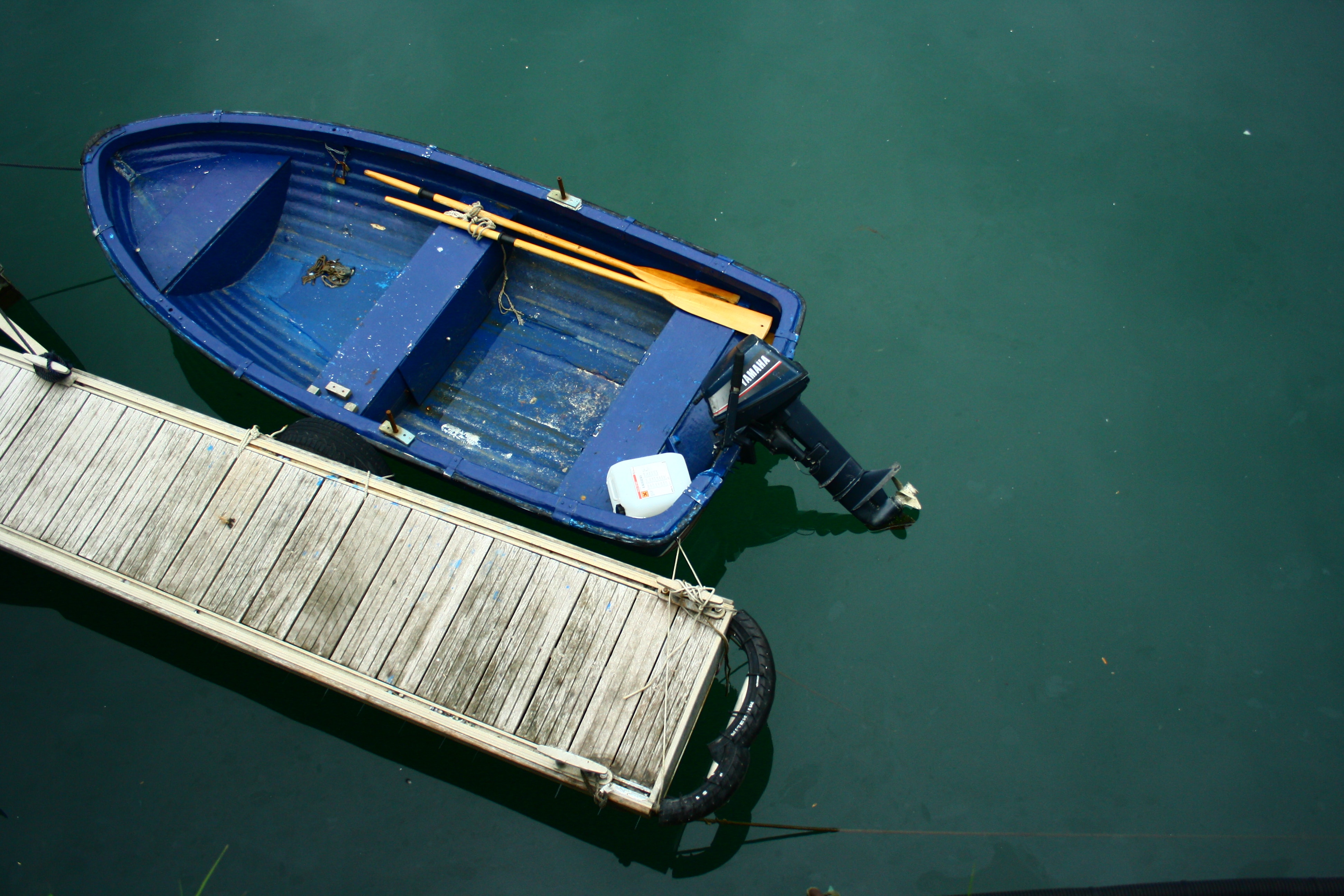
Other key areas to focus your efforts on are weed beds, buoys, jetties and moored boats. All these areas provide sanctuary and cover for fry. Trout will patrol these structured areas throughout the month. Look for surface activity as it’s not uncommon to see the water boil as fry show off their acrobatic display to evade capture. If there is no surface activity, start working your way down through the water column.
Top tip: Try to identify the species of fry. Perch fry, roach fry, sticklebacks. Spooning fish to match naturals.
Recommended Set Up
Rods between 9ft6″ – 10ft in length and a line weight rating of #7 to #8 will be perfect for the job in hand. Fly lines vary from full floating lines to the fastest of sinkers, depending on where the fish are feeding and also the areas in which the fry are holding.
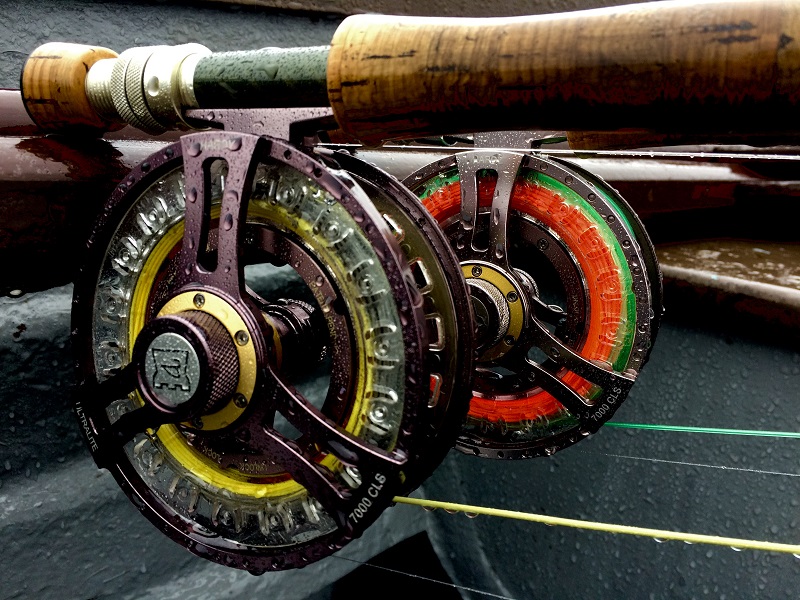
Below we highlight the trout flies we would use in conjunction with specific techniques to target trout in various levels of the water column.
On the Surface
When fish are feeding on or near the surface a buoyant pattern can provide some great sport as the takes can be extremely aggressive and visual. Casting to fish crashing through baitfish with a larger fly such as a booby or a floating perch fry and giving it a few short sharp pulls to cause a splashy disturbance will often grab the attention of nearby fish.

On The Surface Retrieves
Creating a surface disturbance with a few fast short pulls to make the floating fly splash or pop across the surface, can trigger a response. Try a few pauses in-between, this pause not only allows the trout to hone in on your static fly but soon as there is any movement imparted into the fly after the pause will usually result in a reaction strike.
Leader Material
Depending on the profile of the fly, we recommend using a 10-12lb breaking strain fluorocarbon leader. The heavier breaking strain provides a stiffer leader material which helps aid fly presentation when using larger profile flies that are not the most aerodynamic.
Recommended Flies
- STICKLEBACK FRY
- PERCH FLOATING FRY
- CANDYMAN BOOBY
Washing Line Method
When fishing over weed beds or in the margins a “washing line” set up can be effective. This will allow you to fish the shallower margins and over the weed beds more effectively as your flies will be held up by a buoyant pattern on the point of your cast. Fish smaller suggestive patterns from the droppers. These smaller bite-sized snacks can convert following trout into takes.

Washing Line Retrieve
Fishing this with a slow figure of 8 or allowing your flies to fish static is a highly effective method, we can provoke a take by throwing in a sharp pull into the mix now and again. These sharp pulls will create surface disturbance as our booby or floating fry patterns pop across the surface.
Leader Material
A fluorocarbon leader of 8-10lb breaking strain is our go-to choice for fishing the washing line. Too high a breaking strain will result in an unnatural presentation. Going to light can result in break-offs as you well inevitably encounter double hookups fishing a team of flies.
Recommended Flies
- PTN FRY NYMPH
- DIAWL BACH BLACK FLASHBACK
- CANDYMAN BOOBY
- PEARLY CORMORANT
- PIN HEAD FRY
Lure Fishing Method
If you are drifting open water or not seeing any activity on the surface or margins, a Di3 (3-inch per second sink rate) or DI5 (5-inch per second sink rate)- 2 fly cast – with a couple of snakes or humi style patterns can work very well. We are looking to target pelagic trout that are actively hunting in an open water environment.
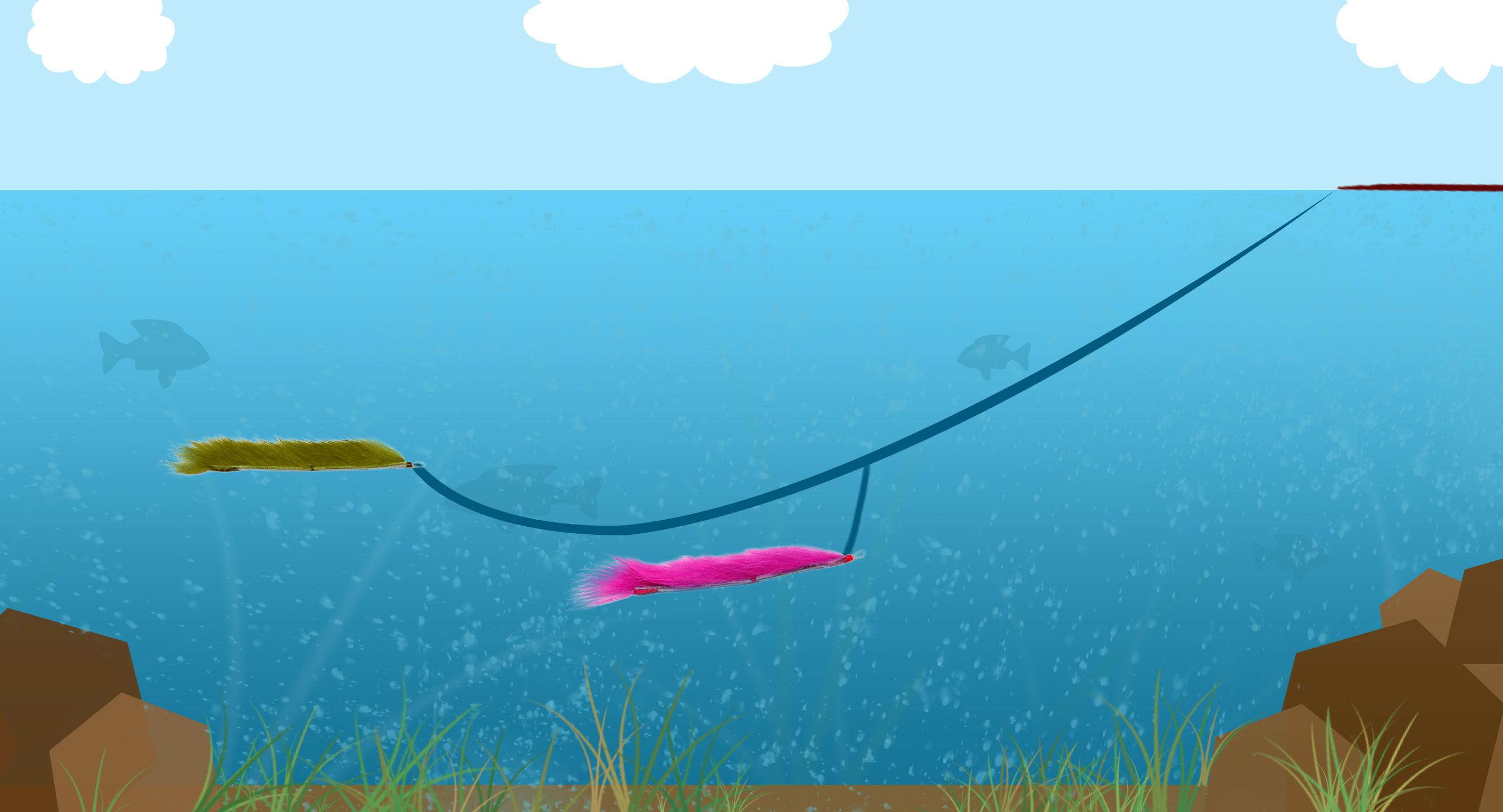
Lure Retrieves
By casting out as far as you can and stripping the line in very quickly or even using a roly-poly retrieve. We are aiming to provoke a strike by limiting the trout’s time to think and the fast retrieve that we opt for in this technique allows us to do so. The larger snake style patterns displace a lot of water and the brighter colours are an easy target, especially in the open or deeper water.
Leader Material
Larger flies require a stiff fluorocarbon leader, this helps turn them over and provide a better presentation. A 10-12lb breaking strain fluorocarbon is suited to the job. The stronger leader is also beneficial when targeting larger fry feeding trout.
Top tip: Be sure to hang your flies at the end of the cast as many fish will chase all the way in but not actually take the fly until the last second when you are about to lift your line out of the water to make a new cast.
Recommended Flies
- UV BLACK POLAR BEAR
- WHITE HUMI SNAKE BOOBY
- MINI ROACH FRY
- WHITE RABBIT SNAKE LURE
- PINK RABBIT SNAKE LURE
Conclusion
Hopefully, after reading this article, you can experiment with our 3 suggested tactics. Remember, to mix it up and try not to become two dimensional in your approach. Thinking outside the box and trying various flies and covering various depths will help you decipher what the trout want on that specific day.

